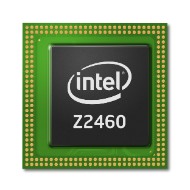Flush from releasing its latest iPad, its stock price hovering near $600 and with billions in cash in the bank, Apple has announced plans to launch a dividend and share repurchasing program. The two programs will result in the company spending approximately $45 billion in three years.
The plan calls for Apple to spend $10 billion in a share repurchase program that will begin in September 30, 2012. Its goal is to help neutralize the impact of dilution from future employee equity grants and employee stock purchase programs. This program has already been approved by the company’s Board of Directors.
The second program calls for a quarterly dividend of $2.65 per share sometime in the fourth quarter of its fiscal 2012, which begins on July 1, 2012. This is still pending approval by Apple’s BoD.
Apple loses key ITC ruling
After a strong winning streak in its patent battles Apple is starting to lose a few again. The latest comes with an Administration Law Judge at the International Trade Commission ruling that Motorola Mobility did not infringe on three Apple patents. Apple had appealed an earlier ruling on the topic, and will now likely take the issue to court, so it is far from over.
Conde Nast to give advertisers viewer data
Conde Nast is finally relating the information it has been harvesting from readers of its iPad edition of its magazines. For the last 2 years a variety of its publications have been available on the tablets and I has been tracking a variety of information including basic data such as how many readers it has, the breakdown between paid and single issue sales and how long readers view articles and ads.
I would love to hear what some of this information and home the publisher will reveal some details to the public about what impact tablets have had on its business model, both pro and con. Publishers will start receiving data on specific issues 10 weeks after it hits the stands.
Windows 8 Tablets on the Horizon.
There seems to be a lot of breathless talk that when Windows 8 is released a slew of tablets will be released and crush Apple’s iPad, returning the tablet market to the righteous. Who cares? I hope that the tablets are good and have the options I want, not how they compare to Apple. But I digress.
There is a lot of talk about who is going to have tablets when Windows 8 is available, and a list of probables and a few features is included in this piece by the International Business Times. No real surprises, Hewlett-Packard, Nokia, Dell and some others but worth a look so you have an idea of what is on the way.
Kindle and Nook in for a fight from new Nexus tablet?
The site Android and Me is reporting that a Nexus tablet from ASUS is a done deal and expects that the tablet will come in at a very nice $149. It is reporting that Google has selected ASUS to produce the next generation Nexus tablet and that it will have a 7-inch form factor and that all other details are unknown at this time.
However this will go directly against the two popular e-readers out there, from Amazon and Barnes & Noble, which currently are the second and fourth most popular selling tablets. A good price war is always popular with consumers and I am looking forward to what they do if this turns out to be true.
Americans willing to pay for tablet content aside for news
A recent Nielsen study on tablet content purchases found some interesting facts about European and American users. Americans are willing to pay for almost all types of content, with 62% having purchased music, 58% purchased books and 51% have purchased movies, but only 19% paid for news.
That is not too far out of line with the European countries surveyed about news, aside from Italy which had 44% purchasing news content. The Europeans showed they were much less likely to buy books, movies and music than Americans.








